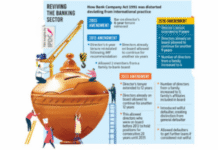FE Online Report | August 26, 2020

In its latest survey on garment workers in Bangladesh, South Asian Network on Economic Modeling (SANEM) and Microfinance Opportunities (MFO) have found that among the 1,272 workers they had interviewed, 34 per cent of respondents were the only household earners, says a press release.
Among the respondents, 26 per cent of women said that they were the only household earners, compared to 60 per cent of men who said the same.

The survey found that among the remaining 66 per cent of households reported, there was at least one additional wage earner living at home other than the respondents themselves.
To assess the impact of the ongoing COVID-19 Pandemic on the overall working and living conditions of garment workers in Bangladesh, SANEM in partnership with MFO have been conducting a series of surveys, with new questionnaires and among slightly changed number of respondents each week.
Around 1,272 workers who are employed in factories in Chittagong, Dhaka City, Gazipur, Narayanganj, and Savar were interviewed for the survey.
Over three-quarters of the working respondents are women, which is roughly representative of workers in the sector as a whole.
The latest survey looks into the household economies of garment workers. The survey helps to understand not only how individual garment workers are coping during the COVID-19 crisis, but how the members of their household upon whom each other depends are also faring, a blog article on the survey findings said.
Among the households which reported having at least one additional wage earner living at home, 83 per cent agreed to share information on the economic activities of the other wage earners residing in the home. It was found that among these households, 91 per cent of respondents reported one additional wage earner in the household, almost 9.0 per cent of respondents reported two additional wage earners, less than 1.0 per cent of respondents reported three or more additional wage earners.
These statistics from July 2020 are very similar to the March through June period, the blog report mentioned. These demographic breakdown is also similar to what was previously reported: 71 per cent of other wage earners in the household during July 2020 were the respondent’s spouse, in case of women respondents, 73 per cent of other wage earners in the household during July 2020 were the respondent’s spouse, compared to 57 per cent in the case of men respondents.

The respondents were asked about the wages and work hours of other earners in the household during July 2020. The findings in July continued the trends found in June, which saw a continued drop in unemployment, increased work hours, and a narrowing of the gap between women and men in earnings, the blog report observed.

The surveys being conducted by SANEM and MFO are part of a project titled “Garment Worker Diaries”. The Garment Worker Diaries collect regular, credible data on the work hours, income, expenses, and financial tool use of workers in the global apparel and textile supply chain in producing countries.
The objective of the project is to have the data and inform government policy decisions, collective bargaining, and factory and brand initiatives related to improving the lives of garment workers.

The project began in 2016 when Microfinance Opportunities, a global non-profit, in collaboration with local research firms in Bangladesh, India and Cambodia, collected data from 180 women in each country every week for a period of a year.
It is expected that the data will result in a major improvement in the transparency of global supply chains.









